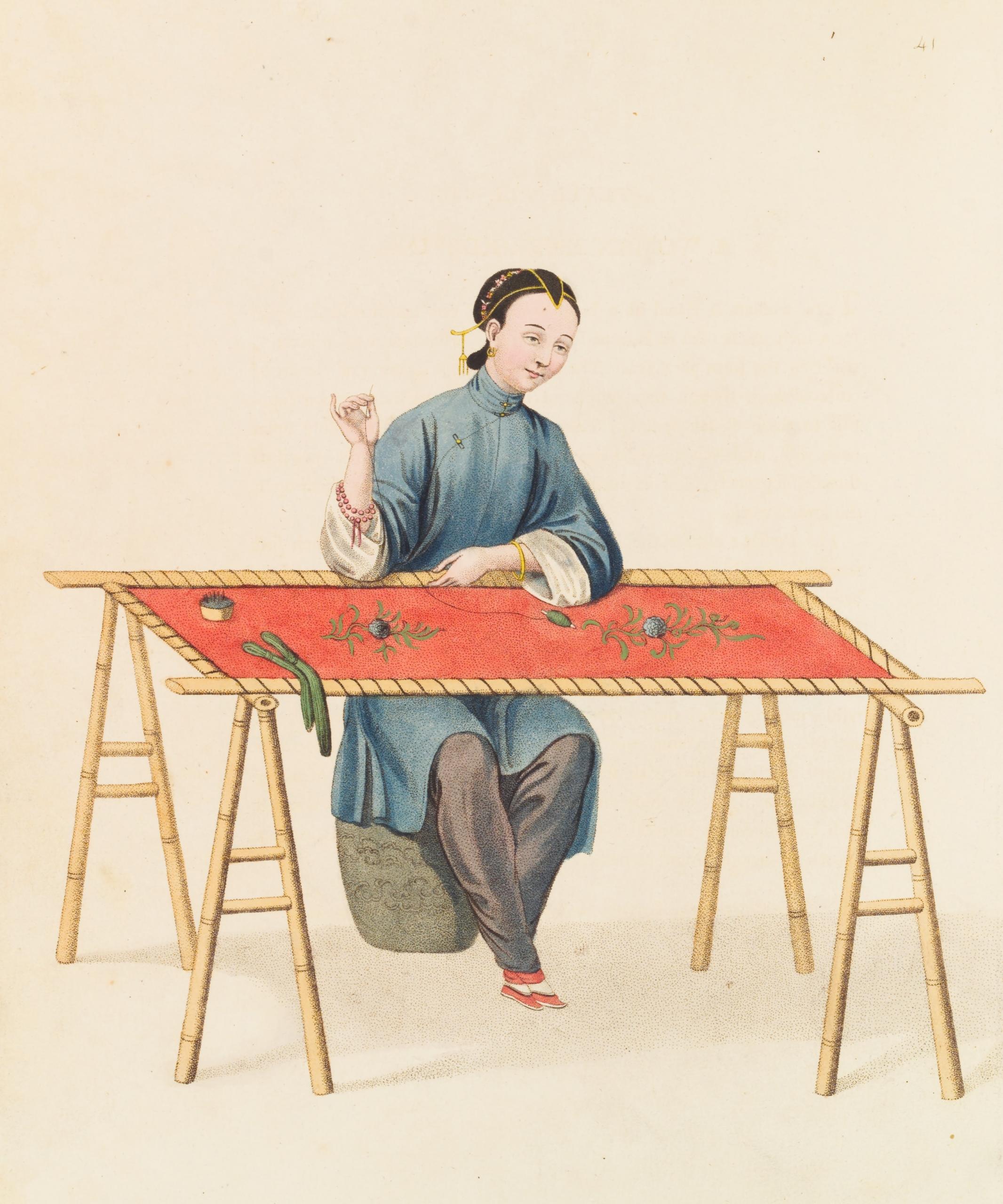Sewing is a craft that involves joining fabrics using stitches made with a sewing needle and thread. It is an ancient practice, born of necessity and driven by ingenuity. Sewing techniques and equipment have evolved through the millennia, bringing about profound changes in human civilization. Even today, this art and craft remain an important activity.
| 🗓️ Event | 🕰️ Era | 🔎 Effect |
|---|---|---|
| Various human species craft the first sewing needles | Starting in the Paleolithic period ca. 100,000 to 10,000 years ago | Clothing is made for warmth and perhaps for social status. Today's scientists conclude early humans were capable of visualization, reason, and purpose. The astounding discovery that various groups developed sewing concepts independently of one another. |
| Ancient Greeks spin flax into fabric and thread; create sails for their ships. | Antiquity 8th century B.C.E. to the 5th century C.E. | Began the practice of burial shrouds. Began the era of international trade by ship. The first surgical sutures are used in mummification. |
| The Silk Road brings delicate fabrics and thread to West Asia and Africa. | Starting in the Han Dynasty 206 B.C.E. to 220 C.E. | Raised sewing from a functional skill to an art form. Introduced fashion sense. |
| Emerging from the Dark Ages in Europe | The Middle Ages 5th to the late 15th century. | Clothing became a status symbol. Tailoring became a legitimate profession; first tailor guilds established. Embroidery and other clothing decorations grew in popularity. |
| 1st Industrial Revolution | 1760 to around 1830 | Factory produced needles, thread, and fabrics. First sewing machine invented. |
| Sewing machines become durable and efficient | The end of the 1st Industrial Revolution | Industrial-scale manufacture of clothing. A boon for fashion and commerce. |
| Women enter the sewing workforce | The beginning of the clothing industry, around 1901 | Women and children staff factory floors. The rise of bought clothing. Sewing at home becomes a craft activity. |
| Textile production moves offshort | Beginning in the 1970s | Impoverished countries begin their industrial journey. Store-bought clothing becomes the norm. Sewing becomes a niche art; a hobby. |
| Coronavirus pandemic | 2020s | A burst of DIY inspiration. Lockdowns and isolation brought out the sewing machines. Social media proclaimed sewing triumphs. Sewing tutorial channels became viable businesses. |

The Early History of Sewing
What is sewing? It is one of the oldest practices of textile arts. At the very beginning of the history of sewing, bone, antler, and ivory were used to make needles. 'Thread' was made from a variety of materials, including animal sinew and plant fibers. From archaeological finds around the world, we can piece together this rough timeline1:
76,000 years ago
Awls made of bone in South Africa
Made by either homo sapiens or homo neanderthalensis; found in Sibudu Cave
50,000 years ago
Denisovans craft garments with sewing needles
Denisovans are an extinct human species; needles found in Siberia
45,000 years ago
The first eyed sewing needles appear
Discovered in China and Siberia
~26,000 years ago
The first sewn clothes appear on the European continent
Evidence of sewn decorations uncovered
~13,000 years ago
Sewing manifests in North America
Stone and bone needles found in Canada and across the northern United States
The oldest needle we know of was most likely made from a bird bone. It is small and delicate, suggesting that it was for precision sewing. Other needles, made of stone, bone and ivory, have been discovered across Slovenia, China, and Russia. As those are all northern hemisphere regions, we might suspect that early humans sewed to keep themselves warm.
Archaeologists believe that the finer needles they found suggests sewing began incorporating decorative elements early on.
These artefacts originated in varying climates, and manifested across different human species and societies. What's most astounding isn't just the number and variety of needles found, but that they were (and continue to be) found all over the world. That leads to one significant conclusion: rather than copy each other's technology, each early society created their sewing tools independently.
Sewing to Build Ancient Civilizations
That mind-blowing realization causes the scientific community to reassess early humans' cognitive abilities. Until these discoveries, those species' abilities to visualize, reason, and create was thought to be limited. But when it comes to the Ancient Egyptians and their civilization, all those doubts disappear.
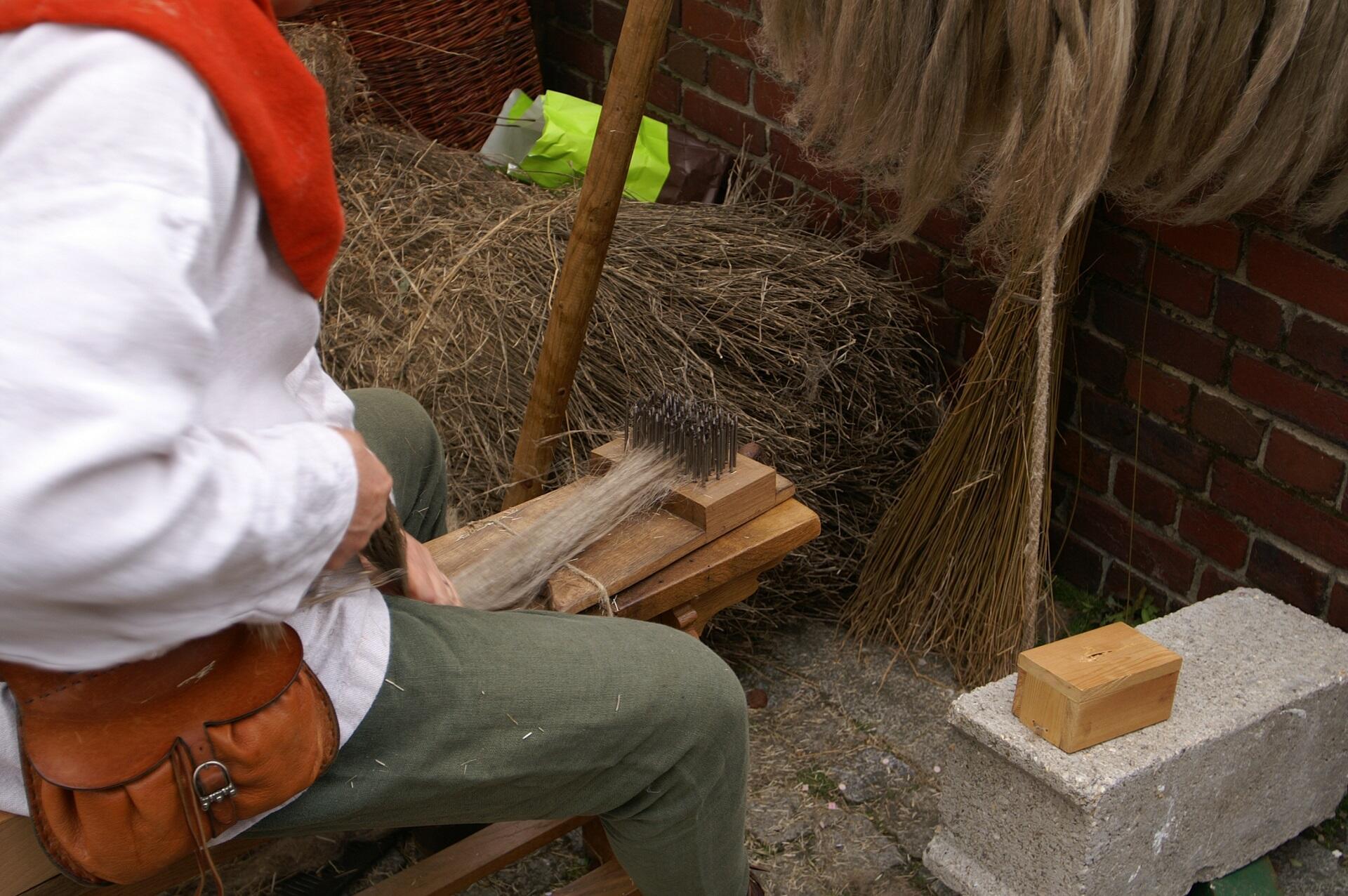
The Nile River gave them flax, a superior fibre that they spun into fabric and stretched into thread. People had the tools and ingenuity to make the most of that bounty. Soon, they were sewing sails that powered their ships across open waters, marking the start of international trade by sea.
Within the same timeframe, Chinese Emperor Wu commissioned an explorer to establish trade across the far-flung world. The Silk Road created a path to deliver fine jade, ivory sewing needles and bolts of refined, delicate fabric. And, of course, different types of sewing styles to work with them.
Fine fabrics and strong, thin thread turned sewing - a functional skill, into an art.
These new materials gave the world embroidery and introduced clothing for fashion.
Sewing in Medieval Europe
Few people thought about their dress style during the Dark Ages, amidst civilizational collapse. However, as soon as order and discipline reasserted itself, what one wore proclaimed their social status.
During the Medieval Period, royalty demanded to be clad in the finest fabrics with the most elaborate markings. Church leaders, not to be outdone, insisted on lavish garments, too. The aristocracy, patrons of both those institutions, was all in on those initiatives.
This craving for wearable opulence gave rise to a whole new industry. Tailored clothing became the mark of distinction, with men and women changing clothes several times each day. Even early in his reign, King Henry exemplified this trend.
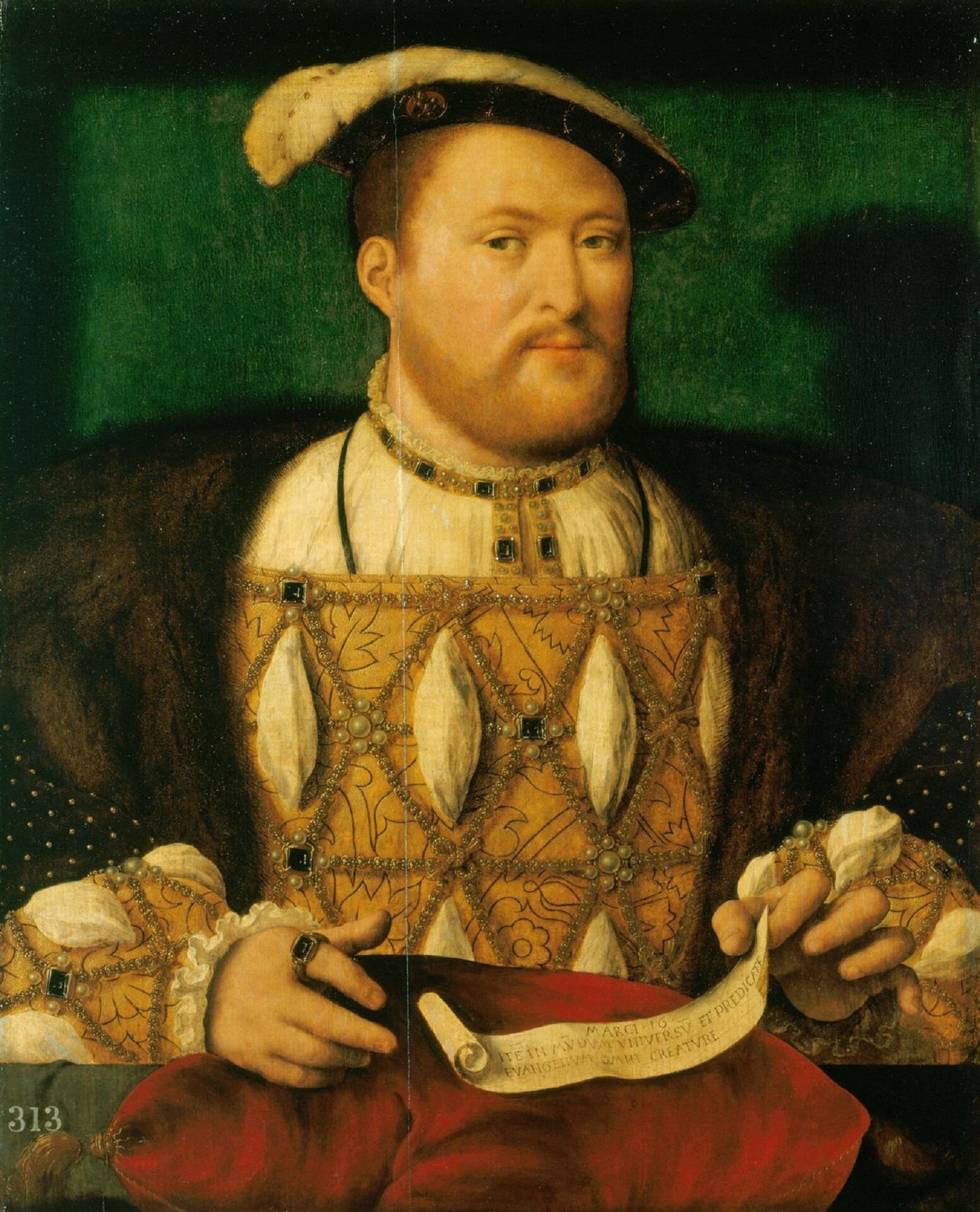
Skilled tailors worked double-time to meet the demand, creating fitted garments and fancy gowns.
Around this time, sewing guilds emerged, making tailoring a legitimate profession.
As increasingly-wealthy Europe cycled into its Renaissance period, embroidery became tops among sewing techniques. Everything was embellished with embroidery, from common household items to decorative tapestries.
Embroidered clothing became the fashion must-have. The more intricate the stitching, the higher the wearer's social status, as this quick clip proves.
The Sewing Machine Revolution
And so, things progressed until the First Industrial Revolution. That's when textile production shifted from slow, hand-woven processes to machine-driven. Mass production of whole cloth and clothing gave humans a bounty of fabrics, colors and styles to choose from.
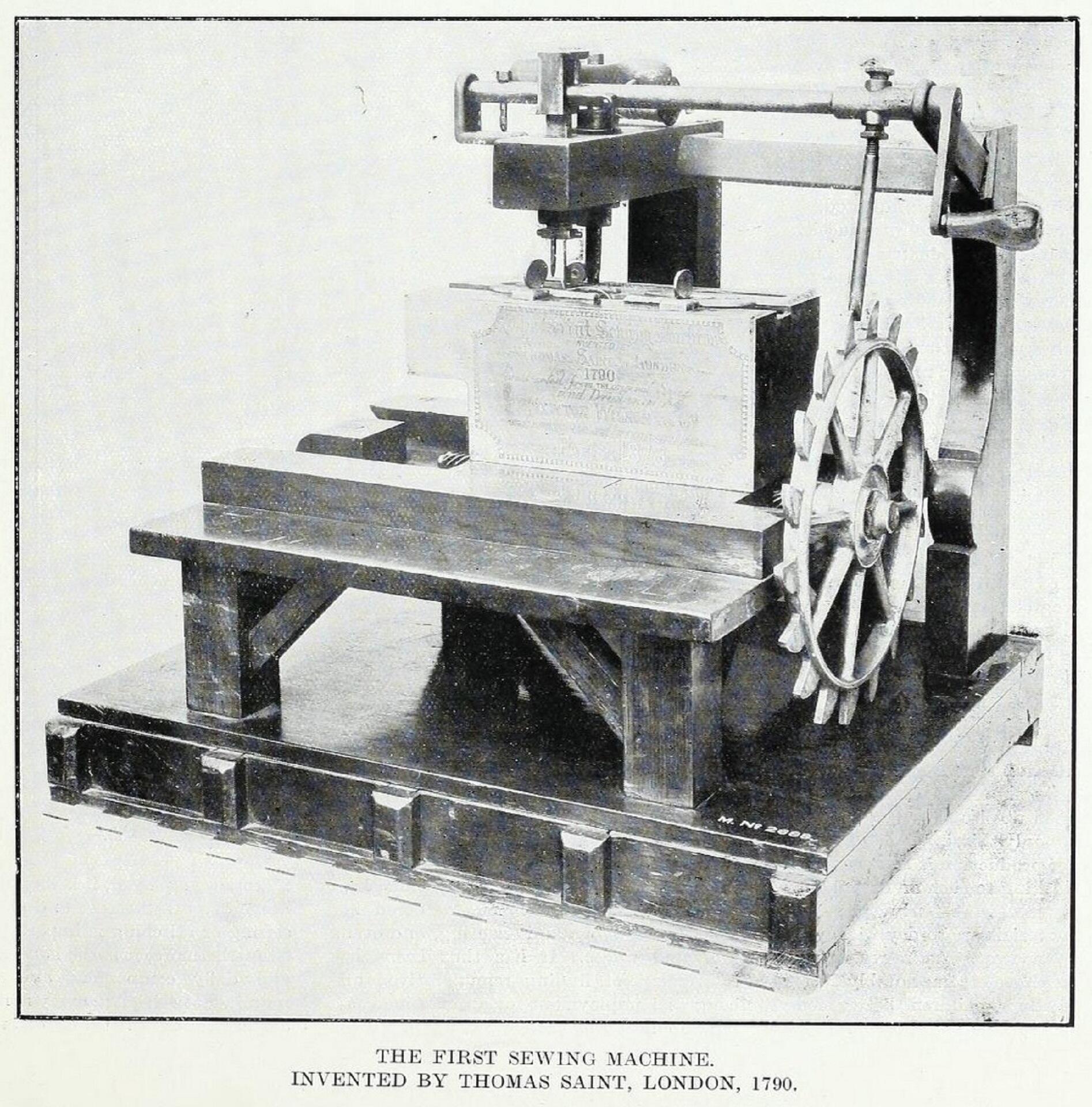
An English cabinet maker, Thomas Saint, patented the world's first sewing machine in 1790. Later, in 1840, more sewing machines filled the markets.
The French inventor Barthélemy Thimonnier designed a simpler sewing machine, in 1841, to produce military uniforms for France's army. By 1850, Isaac Singer developed his sewing machine.
Singer machines could surpass the productivity of a tailor sewing by hand. Today, Singer remains a top brand in sewing. We now have different types of sewing machines, each one of which has a specific function:
- Mini and portable machines
- Overlocking or serger machines
- Mechanical and electronic sewing machines
- Embroidery machines
- Quilting machines
- Computerized or automated machines
Sewing machines (and people trained to operate them) revolutionized the production of clothing for the middle class. In a curious twist, they increased the demand for higher-end clothing that was sewn by hand.
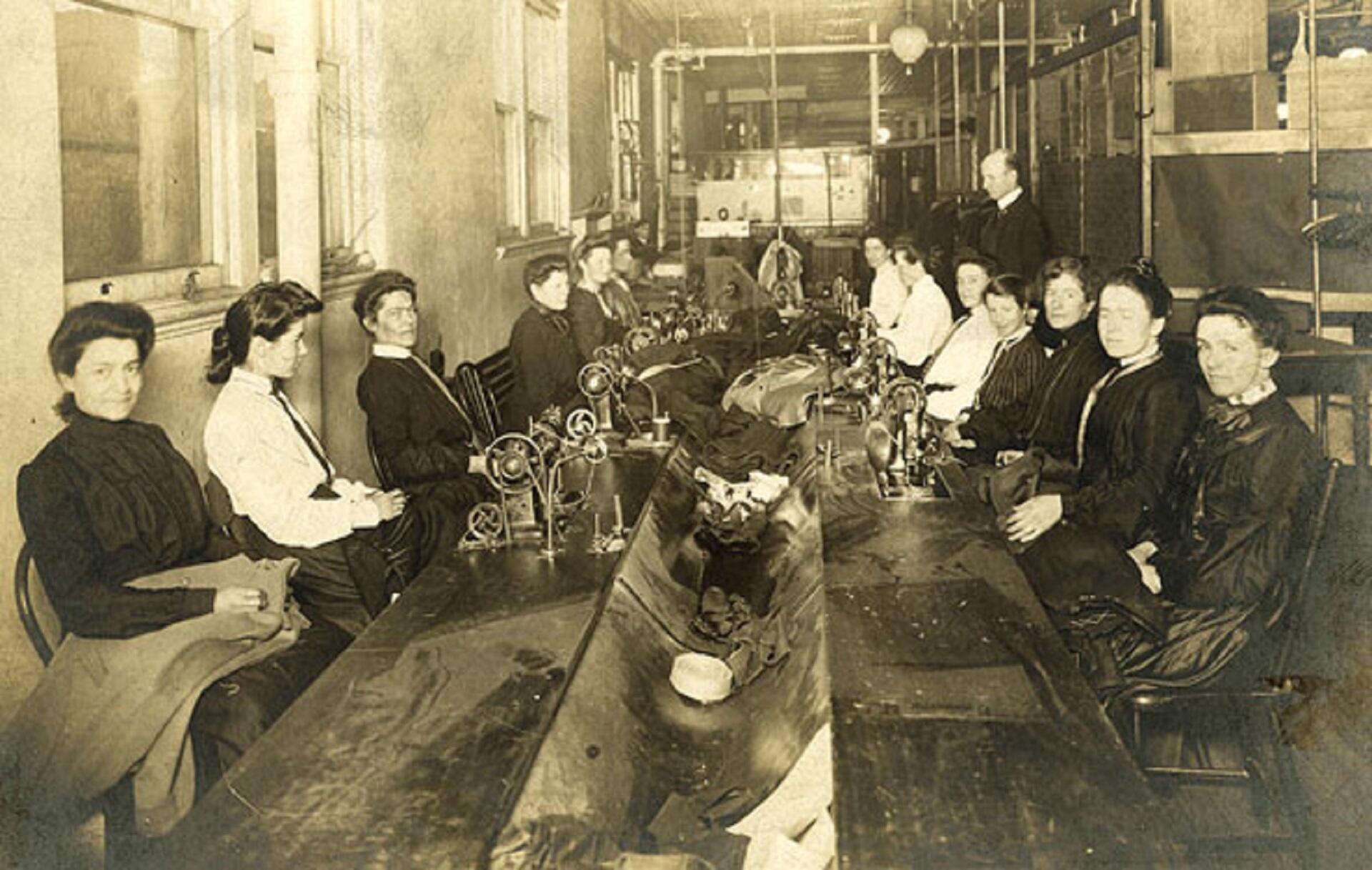
Sewing Becomes Democratic
Sewing machines also expanded the activities that women were involved in. Tailoring was a males-only profession but sewing at home, for personal consumption, was women's work. The Industrial Revolution and, particularly, the invention of durable, functional sewing machines, boosted the demand for labor. Women entered the workforce in droves.
With their days spent on factory production, women had less time to sew at home.
This fueled the early-century consumer boom for produced clothing.
It also turned sewing at home into a leisure craft activity for stay-at-home women.
Modern Sewing Today
Despite offshoring industrial textile production (starting in the 1970s), sewing remains a relevant skill in industry and at home.
Needle arts enjoyed a resurgence during the Coronavirus Pandemic. As we all hunkered down at home, hoping to avoid infection, many dusted off their sewing machines and inventoried their sewing supplies. In short order, social media was filled with sewn creations. Soon, a cottage industry thrived, based on an ancient practice.
As that clip demonstrates, COVID and sewing were/are natural fits for today's DIY (do-it-yourself) culture. We're lucky to have the tools - and, during the pandemic, the time to explore our creative sides.
Still, for all the technology - in fabric and thread production and machines, sewing remains essentially as it was millennia ago. The same tools are used, only our needles are more refined and precise, and our fabric selections are far greater. The same sewing techniques apply to join fabric panels, turning them into usable, versatile products.
Running Stitch
The running stitch is the most basic of all sewing stitches; one that even prehistoric needle artists likely used. This stitch works by passing the sewing needle in and out of the fabric.
Depending on the project, the running stitch can vary in length, and the materials used don't have to be thread and cloth. You might sew a pair of leather moccasins or a purse using a thin strip of hide instead of thread, for instance. This type of stitch is mainly used to sew basic seams holding fabric layers together.
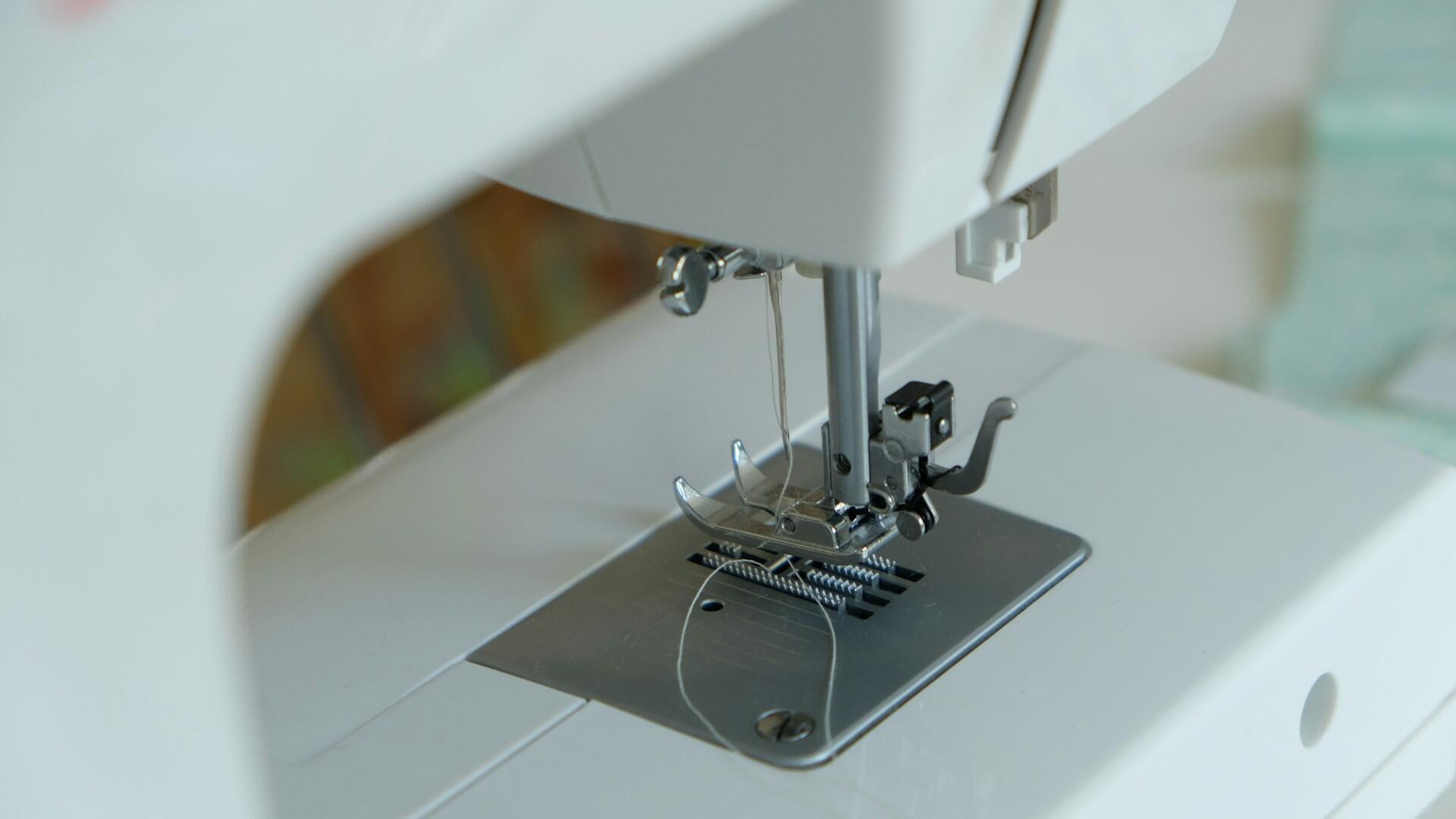
Lock stitch
This form of stitch is performed by the most common single-needle sewing machines. This stitch involves the needle passing through the fabric and interacting with a bobbin or boat shuttle beneath the fabric platform.
Because of this, the end result is a strong stitch that can be used on any piece of clothing where there is a seam, such as shirts and blankets. Note that you can also execute a lock stitch by hand.
Before you make the next stitch, pass your needle through the last stitch you made, which will 'lock' the thread in place. In effect, you'll be doing the same thing a sewing machine does.
Overlock
An overlock stitch, also known as a serger stitch, demands a multiple-needle sewing machines.
It involves between one and four threads, one or two needles and one or two loopers. The most common use for the overlock stitch is on seams for stretchy fabrics, and to protect edges from unraveling. Seams in your blue jeans are good reference.
Today, most complex DIY sewing projects demand a serger. Our materials are lighter and stretchier than ever, and our fashion boundaries are generous enough to craft any design.

Now that you've explored the history of sewing, try your hand at different types of stitches with your sewing machine or by hand to find the ones you enjoy the most. You may even consider building your own sewing room, a good start to being more organized and enjoying this new/ancient craft.

